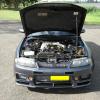Postive Crank Ventilation Valve
Announcements
-
Similar Content
-
Latest Posts
-
You are perhaps suggesting that it is not a super car? Well....it's not an AU.
-
Dropped the MX5 of this morning to get the hardtop colour matched and some PDR done, they are also going to give it a buff to remove some "stubborn" swirl marks and light scratches in the clear coat Over the last few months the poor little thing has copped some shopping centre car park abuse, I try to not park in them, but hitting Westfield's a few times over the last few months has taken its toll, nothing really bad, but enough of a trigger for a "while we're in there" thingie Once it's back and all the one colour, with a few dents and mark's removed I'll give some of these products a go and see what they're like
-
A locally delivered Infiniti have remote start installed but don't come with the remote start key. You need a new remote start key and they just need it programed. And this is different to making/programing a new key that just starts the car.
-
Cheers, and cheers for sharing so much of the build and also sharing the glimpse of what turns out to bring a lot of us poor decision makers together haha. I do recommend learning more about how to manage it, if not considering getting a formal diagnosis. The discussion with the psychiatrist I got my diagnosis through was quite eye opening, things I'd not even considered to be ADHD related and hadn't mentioned were things she asked about out of the blue and were common themes with people with my flavour of ADHD. It's not a label for people who are hyperactive and ill-attentive, there's more to it than that and some of it can be much more challenging or damaging - though there are of course two sides to the thing, and a lot of the stuff we have to go through and work on to live with it make us effectively "better" at other things as well. Aside from the fact that there is some argument I could have a bit of ASD seasoning in there (came up during the diagnosis, and neurodiverse things seem to not stay as a cookie cut) I suspect you need to learn more about ADHD if you are puzzled about how hyperfocus could possibly apply. I *do* personally use "superpower" with quotes deliberately, but it's 100% an ADHD thing due to the exact reason that lack of focus is also an ADHD thing... Loosely speaking the inattentive side of ADHD isn't the inability to focus, it's the inability to control where the focus goes. Not being able to sleep because brain is more interested in thinking about a stupid thing I said to a girl I liked 30 years ago, not being able to focus on work because my brain is more keen on putting together the torque management strategy we're going to try out with a drag car next weekend, not being able to focus on a conversation with someone I WANT to listen to and respect because there is a flickering light in my peripheral vision. If I could just stop work and build the torque management setup right there and then I'd not hear anything else until it was done.
-







Recommended Posts
Create an account or sign in to comment
You need to be a member in order to leave a comment
Create an account
Sign up for a new account in our community. It's easy!
Register a new accountSign in
Already have an account? Sign in here.
Sign In Now